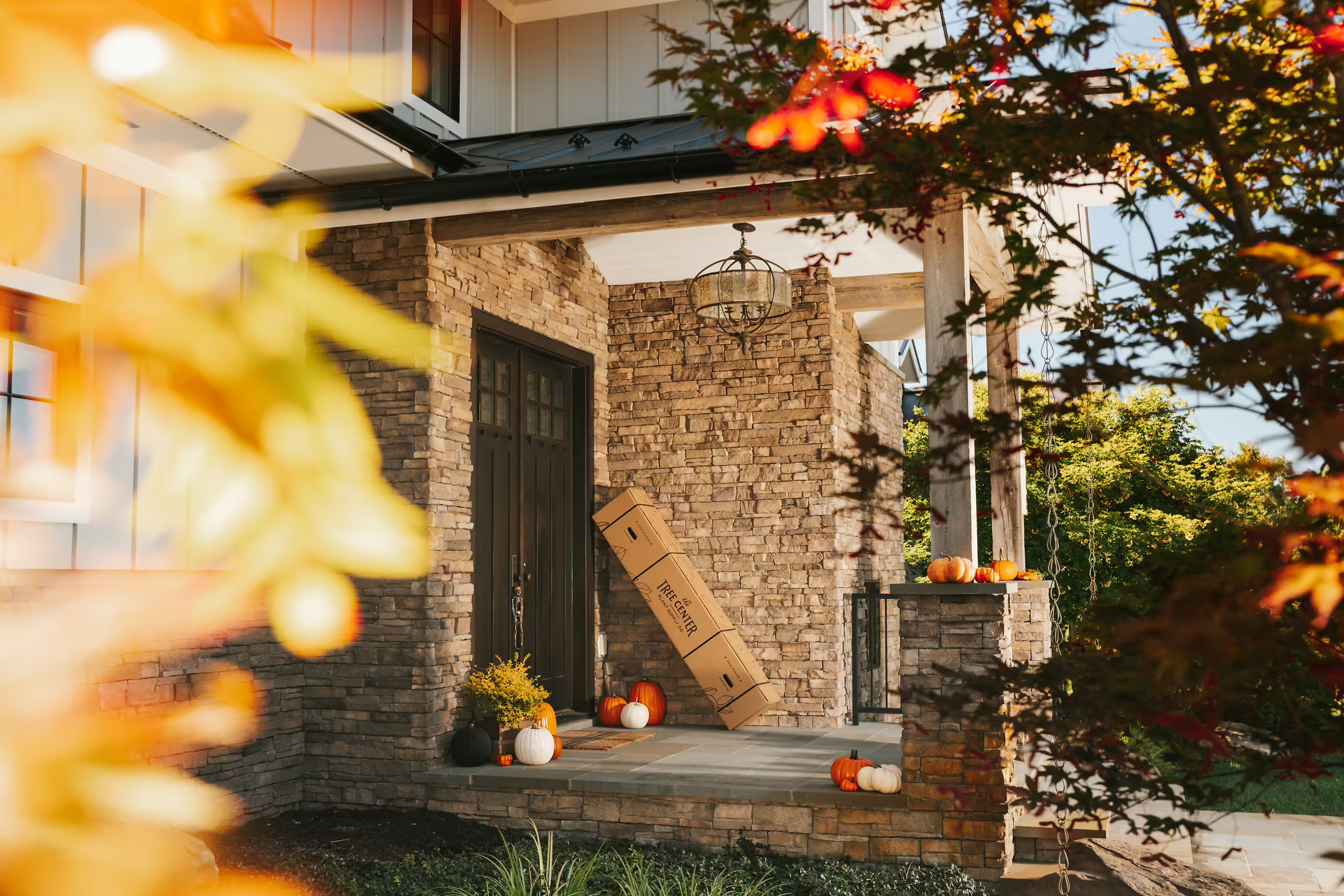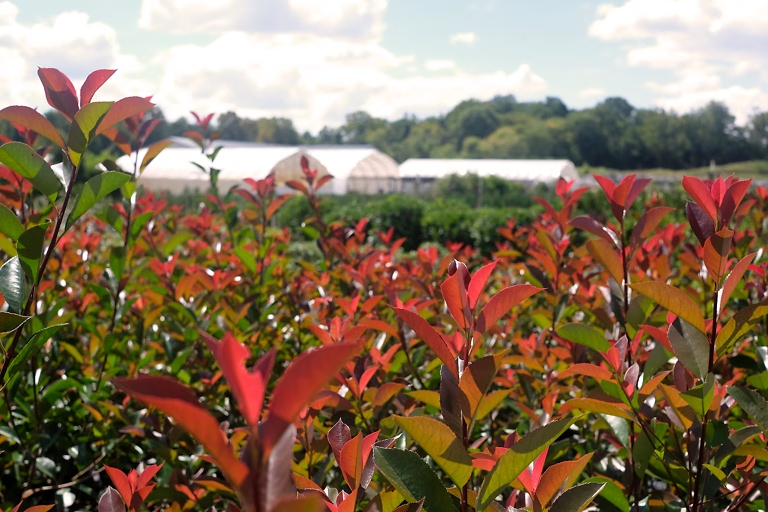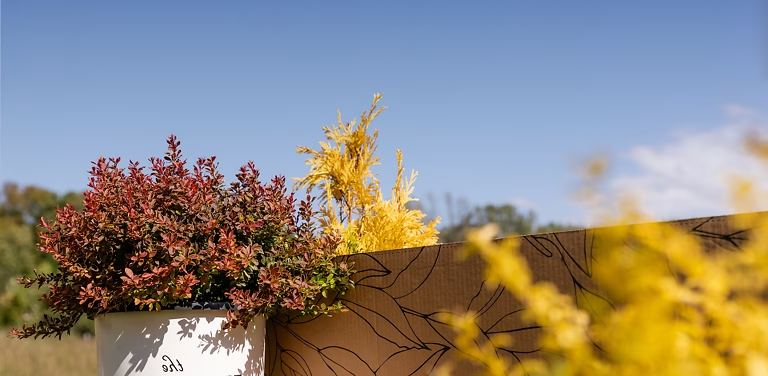
Written by s • Is It Too Late For Fall Planting?
“Am I too late to plant?” Seems like a simple question, so what’s the answer? It’s complicated! Factors like the type of tree, where you live, if the tree is in a container or not – all these come into play in deciding whether you still have a window open for planting a tree, as the season wears down. There are lots of ideas out there, some good, some bad, some based on outdated methods, and some that have it right. Let’s sort out fact from fiction.
Quick Tips on Fall Planting (read on for details)
- You can plant deciduous trees and shrubs until the soil temperature reaches 40oF.
- Evergreens need a longer window, so try not to plant when the soil is below 45oF.
- Plant that are well-rooted in pots can be planted as long as you can dig the hole.
- Always water thoroughly, even if it’s raining.
- If you left it too late, place the pots close together and pile straw or mulch around them until spring.
Why is Fall a Good Time to Plant Trees?
Fall is a traditional planting time for trees and shrubs, and there are lots of good reasons why. Trees planted in the fall get going in spring right away, in tune with the particular season, which could start sooner or later than average, depending on the weather that year. Some places have short springs – dry and hotter weather comes soon – and if you miss that small spring window you are looking at stressed plants that will stress you out too, needing very frequent watering and attention.
So the question isn’t about planting in fall, but how big the fall window is, and when it closes. Let’s take a closer look at what happens when you plant a tree in fall.
How Trees Respond to Fall Planting
The life a tree is split in two. The top-growth does it’s thing depending mostly on air temperatures at night and the length of the days. Cool nights and shorter days signal to the tree that growing time is over, and to hunker down and prepare your buds and stems for colder weather. Growing points go dormant and new leaves stop being produced. The sap thickens and buds protect themselves with thick or waxy waterproof scales. The cells in the stems stop dividing and the branches stop thickening. The bark matures.
But underground, life is simpler. Root growth is controlled mostly by soil temperature, and studies done at Cornell University (one of our premier schools for horticulture) have shown that until the soil temperatures reach 40 degrees Fahrenheit [4.5oC], roots keep growing. To give you an idea of what that means, right now (7:00 am, 10/26) in Georgia’s Chattanooga Forest, it is 48o, but 4 inches down in the soil it is 60 degrees. Further south in Savanna it is 65o, but the soil is 72o. (data from Georgia Automated Environmental Monitoring Network – other states might have similar services). It is going to be a long time yet until root growth stops across the South. As well, root activity in trees begins well before buds start to open. The sap rises for maple syrup weeks before the buds begin to visibly stir.
What does this mean for planting? It means that if you live where the ground never freezes hard in winter, you can plant every month. The basic rule is, if you can dig, you can plant. A soil thermometer is a cheap and simple purchase that will take the guesswork out of your fall planting. Push it down so that the tip is 8 inches deep, and take a reading. Early morning is probably best, but it doesn’t change much between day and night. As long as it is above 40 degrees, you still have a planting window. Take no notice of advice like, “plant as long as there are leaves still on the tree”, and other ideas like that – soil temperature is all you need to worry about.
Changing Growing Methods Mean Changing Planting
Once upon a time, boys and girls, trees and shrubs were grown in fields. In spring and in fall nurseries dug those trees up and either sold them without any soil (bare-root) or tied up in burlap (B&B). You can still buy trees that way, mainly cheap hedging, some fruit trees, and roses are sold bare-root, and big trees for landscapers are sold B&B. For all the rest of us, there are trees in pots.
Now one big reason for all the concern about fall planting was that a tree that was dug up lost most of its roots, and needed time to replace at least some of them if it was going to survive winter, and pump water into the buds and needles.
When you plant a tree out of a pot it has all its roots with it. Even if you do as we suggest and cut through the roots in several places to prevent girdling, most of the roots still function. So it takes almost no time for the roots to connect with the surrounding soil, and it hardly matters anyway, as long as the root-ball stays moist through winter. Since a deciduous tree doesn’t need much water through winter, it hardly matters if a potted tree spreads out much before the ground freezes, but it does matter more for evergreens. There isn’t any hard data on this, but I would suggest 45 to 50 degrees as a cut-off for evergreens, and 40 for deciduous plants.
Watering is Incredibly Important, Even if It’s Raining
In all my experience, trees that die over winter weren’t planted too late. They simply weren’t watered properly when being planted, and afterwards. This is so vital it can’t be said too much. Has it been raining? Water anyway. Is it raining now? Water anyway. Watering while planting does two things. First, it makes sure the soil is damp around the roots. Secondly, and much more importantly, it moves small soil particles into intimate contact with the roots, so they only have a tiny distance to send out their root hairs, make contact, and start drinking.
I strongly recommend that when planting, you fill the hole back no more than two-thirds, and then add water to the top. Let it drain, and if the soil was dry when you started, fill it again. Once the water drains away, replace the rest of the soil, and water some more if the soil going back is dry. It is also important to never plant a dry root-ball. Soak it thoroughly the night before. With evergreens in particular, come back later and water until the ground freezes. Cover the root-zone of evergreens with mulch too, as this reduces the depth of soil freezing, and it’s that frozen ground that stops the tree taking up water.
I Bought Some Trees to Plant, but Now the Ground has Frozen – What Can I Do?
This can be an issue if you order trees or shrub at the very end of the season, and then temperatures plummet before you can get them planted. You don’t want to leave plants outdoors in pots unprotected, as roots are more cold-sensitive than top-growth. Push all the pots together, water them well, and then mound straw or bark mulch over the tops. You might use some planks to make an enclosure to keep the mulch in place. Once things start to warm up in spring, remove the mulch and plant as usual.







